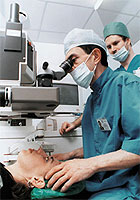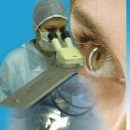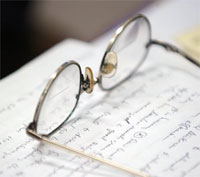Laser vision correction today is the most progressive direction of modern ophthalmology. With the help of the latest techniques, effective treatment of myopia, hyperopia and astigmatism is possible, while the results of treatment remain unchanged throughout life.
Content
 Laser vision correction - history
Laser vision correction - history
Excimer-laser vision correction
Nevertheless, research in the field of surgery eyes continued. In the 1980s, a unique invention appeared – Excimer laser. On its basis, a new technology has appeared - EXIMER-LASER CORRECTION OF VIEW, which is currently the most effective method of restoring vision. Laser beam, managed by a special computer according to a given program change in the shape of the cornea, eliminates the defects of the optical eye lens and levels its surface in such a way that the rays of light projected by the lens, clearly focused on the retina.
Today two methods of laser vision correction are widely used: PRK (FRK – Photorefractive keratectomy) and LASIK (laser keratomiasis).
The FRK method is the first attempt to use an excimer laser for medical purposes. The essence of this method of recovery of vision is to eliminate the irregularities of the cornea by evaporation of its tissues. This method is called contactless, since neither the Ophthalmoshururg himself nor any tools in contact with the surface of the eye. Only a laser beam affects the cornea. However, the FRK method has some disadvantages: small damage arising during the operation is healing for two days. In this case, the patient is experiencing pain.
Lasik method – This combination of microsurgical impact and excimer laser technology. It allows you to preserve the anatomy of the cornea layers, which significantly reduces the unpleasant sensation in the patient during rehabilitation after the operation. In the course of laser correction of vision, the Lasik method uses an automatic microsurgical device that cuts the top layer of the cornea, opening it with a laser beam. Access to deeper layers. The cornea is aligned, after which the separated layer returns to the place and is fixed at the expense of collagen, the substances of the cornea. Thus, no cuts and seams provide complete recovery of vision.









